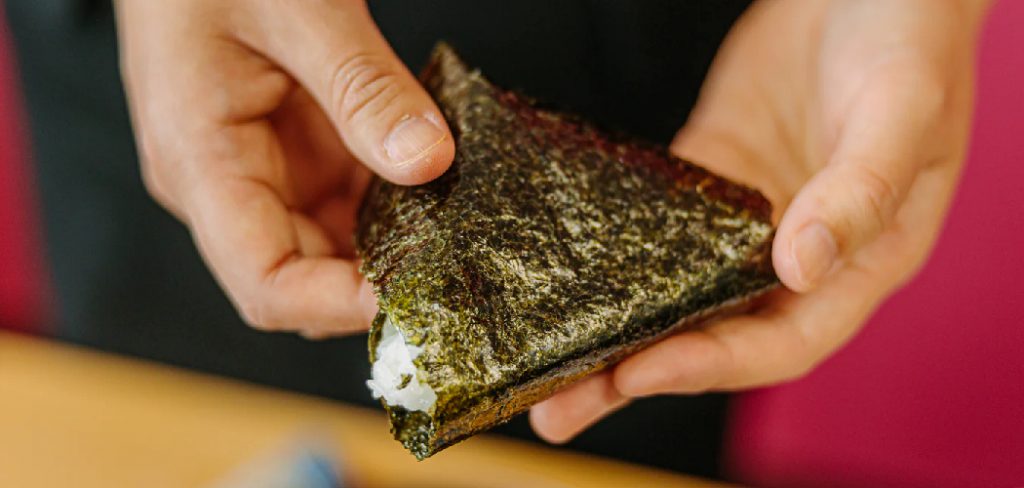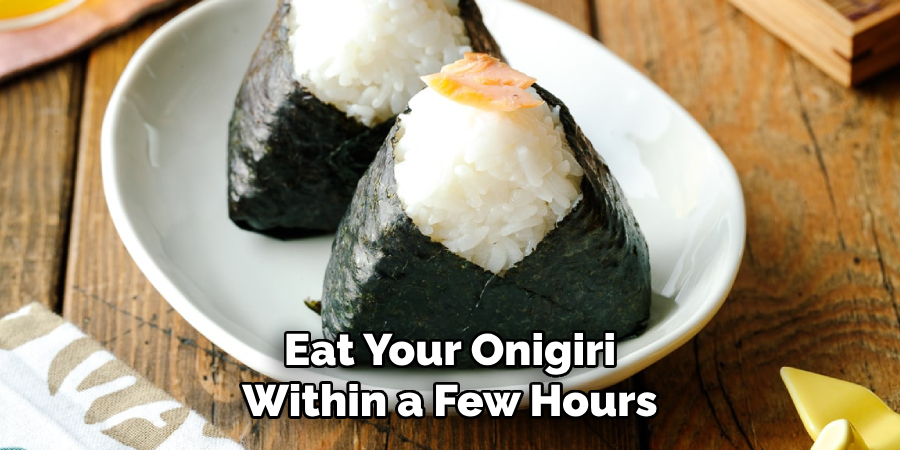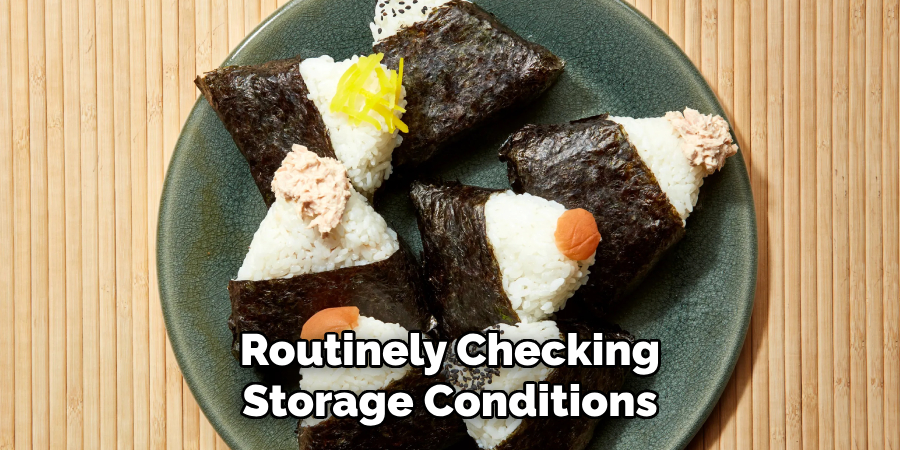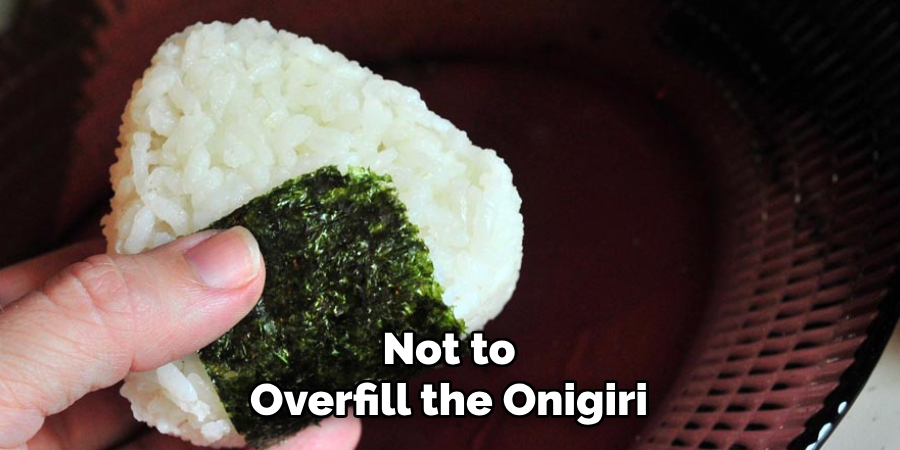Onigiri, also known as Japanese rice balls, are a popular and versatile dish enjoyed around the world. Whether you’re packing them for a quick lunch, a picnic, or a snack on the go, properly storing onigiri is key to maintaining their freshness and flavor. Understanding the right techniques can help prevent the rice from drying out and ensure that the fillings stay delicious for longer. This guide will walk you through how to store onigiri effectively.
Importance of Proper Storage

Proper storage of onigiri is essential to preserving their taste, texture, and safety. Without the right storage techniques, the rice can dry out quickly, becoming hard and unappetizing, while the fillings might lose their flavor or spoil. Additionally, because onigiri often contains perishable ingredients like fish or pickled vegetables, improper storage can pose food safety risks. By taking steps to store them correctly, you can enjoy fresh, flavorful onigiri even after several hours. This not only extends the shelf life of this beloved dish but also ensures that it remains a safe and satisfying option for any meal or snack.
Temperature and Environmental Considerations
When it comes to storing onigiri, temperature and environmental conditions play a crucial role in preserving both the flavor and safety of the dish. Onigiri should ideally be kept at a cool temperature to prevent the growth of harmful bacteria, especially if they contain perishable fillings like fish or meat. For best results, store onigiri at temperatures below 40°F (4°C) if they are not being consumed within a few hours.
If refrigeration is required, consider wrapping them in plastic wrap or using an airtight container to prevent the rice from drying out. Additionally, avoid exposing onigiri to direct sunlight or warm conditions, as this can accelerate spoilage. For short-term storage in cooler environments, insulated lunch boxes or ice packs can help maintain a safe temperature while on the go. By paying close attention to these environmental factors, you can enjoy safe and delicious onigiri anytime.
10 Methods How to Store Onigiri
1. Store at Room Temperature for Short-Term Freshness

If you plan to eat your onigiri within a few hours, storing them at room temperature is ideal. Wrap them individually in plastic wrap to prevent moisture loss and keep them from drying out. Place the wrapped onigiri in an airtight container to prevent contamination. Ensure they are stored in a cool, dry place, away from direct sunlight or heat sources, to maintain their soft texture.
2. Refrigerate for Extended Freshness
For onigiri that need to be stored for several hours or overnight, refrigeration is a practical option. However, cold temperatures can harden rice and make it dry. To prevent this, wrap each onigiri tightly in plastic wrap and place them in an airtight container. Before consuming, allow them to come to room temperature or warm them slightly in the microwave for the best texture.
3. Use a Damp Cloth or Paper Towel in the Container
When storing onigiri in the refrigerator, adding a damp cloth or slightly moistened paper towel inside the container can help retain moisture. This prevents the rice from becoming excessively dry and hard, ensuring that the onigiri remains soft and palatable when reheated or consumed.
4. Freeze for Long-Term Storage
Freezing is the best method for preserving onigiri for several days or weeks. Wrap each onigiri in plastic wrap to prevent freezer burn and place them in a freezer-safe bag or airtight container. Label the bag with the date for easy tracking. When ready to eat, thaw them in the refrigerator overnight or microwave them directly from frozen for a quick meal.
5. Vacuum Seal for Maximum Freshness
Vacuum-sealing onigiri before freezing is an excellent way to maintain their texture and flavor for an extended period. The absence of air prevents freezer burn and moisture loss, keeping the rice soft and fluffy. This method is especially useful for meal prepping or making large batches of onigiri in advance.
6. Wrap with Nori Just Before Eating
Nori (seaweed) tends to become soggy when in contact with moist rice for long periods. To keep the nori crisp and flavorful, store it separately from the onigiri and wrap it just before eating. Use pre-cut sheets of nori and wrap them around the rice ball when ready to enjoy for the best texture and taste.
7. Store in a Bento Box for On-the-Go Meals

For those taking onigiri to work, school, or picnics, placing them in a bento box lined with parchment paper or wax paper can help retain moisture while preventing them from sticking together. Choose a container with a secure lid to . Including an ice pack can help maintain freshness in warmer climates.
8. Use Salt to Preserve Freshness
Salt has natural antibacterial properties and helps preserve rice by preventing bacterial growth. When making onigiri, sprinkle a small amount of salt on your hands before shaping the rice. This not only enhances the flavor but also extends the freshness of the onigiri, making them last longer at room temperature.
9. Avoid Ingredients That Spoil Quickly
Certain fillings, such as raw fish or dairy-based ingredients, spoil faster than others. If planning to store onigiri for longer periods, opt for fillings like pickled plum (umeboshi), salted salmon, or miso, which have natural preservative qualities. Choosing long-lasting fillings reduces the risk of spoilage and foodborne illnesses.
10. Reheat Properly for Best Texture
If onigiri have been refrigerated or frozen, reheating them properly restores their original softness. To reheat, remove the plastic wrap and place the onigiri in a microwave-safe dish. Cover with a damp paper towel and microwave for 30–60 seconds until warm. This method helps reintroduce moisture and ensures a fluffy texture. For a more authentic touch, warm them briefly in a pan over low heat.
Maintenance and Upkeep

Proper maintenance and care are essential for ensuring that onigiri remains fresh and enjoyable, even when stored for extended periods. Start by routinely checking storage conditions, such as ensuring the refrigerator or freezer maintains consistent temperatures to prevent spoilage. When using airtight containers, clean and sanitize them thoroughly after each use to eliminate any residual odors or bacteria that could affect the quality of the onigiri. If using reusable wrapping materials like cloth wraps or beeswax wraps, wash them according to the manufacturer’s guidelines to preserve their effectiveness.
It’s equally important to regularly inspect the ingredients used in onigiri preparation. Always use fresh, high-quality rice and fillings, as these directly impact both flavor and shelf life. For frozen onigiri, consume them within the recommended timeframe to prevent texture and flavor degradation. Lastly, make it a habit to label stored onigiri with preparation dates to monitor freshness and reduce food waste. With proper upkeep, you can consistently enjoy the delicious taste and texture of well-preserved onigiri.
Troubleshooting Common Issues
Even with the best practices, challenges may arise when storing and handling onigiri. Here are some common issues and tips to troubleshoot them:
1. Dry or Hard Rice
Dry or hard rice is a frequent issue, especially after refrigeration. To fix this, ensure onigiri are wrapped tightly in plastic wrap and stored in an airtight container with a damp paper towel to retain moisture. Reheat in the microwave with a damp paper towel covering the onigiri to restore softness.
2. Soggy Texture
If the onigiri turn soggy, it may be due to excess moisture during preparation or improper storage. Make sure the rice is fully cooled before shaping to prevent excess condensation. If stored with nori, keep it separate and wrap just before eating to maintain the desired texture.
3. Spoiling Quickly
If the onigiri spoil faster than expected, the issue might be with fillings or storage conditions. Avoid perishable ingredients or ensure they are stored at the correct temperature. Use airtight containers and, when necessary, refrigerate or freeze them promptly after preparation.
4. Filling Leakage

For onigiri with fillings, you may experience issues with fillings leaking out or mixing unevenly with the rice. Be careful not to overfill the onigiri when shaping and ensure they are sealed properly to keep fillings securely inside.
5. Freezer Burn
Freezer burn can occur if onigiri are not wrapped properly before freezing. To solve this, wrap each onigiri tightly in plastic wrap and place them in a freezer-safe bag with the air removed. Vacuum-sealing is an even better option to prevent air exposure.
6. Uneven Reheating
If the onigiri do not reheat evenly, it could be due to improper microwave settings or placement. Place a damp paper towel over the onigiri to ensure even moisture distribution and rotate the dish halfway through the reheating process. Alternatively, warm them on low heat in a pan for better control.
Conclusion
Onigiri is a versatile and delicious snack that, with proper care and attention, can be enjoyed in its best form even when prepared in advance. By following these storage tips, troubleshooting common issues, and maintaining good preparation practices, you can ensure your onigiri stays fresh, flavorful, and safe to eat. Whether packing them for a lunchbox, storing them for later enjoyment, or preparing them for a special occasion, these techniques will help you preserve the authentic taste and texture of this beloved Japanese treat. Thanks for reading, and we hope this has given you some inspiration on how to store onigiri!
Professional Focus
Angela Ervin, a former interior designer turned blogger, specializes in kitchen design and renovations. Through her website, she blends her passion for cooking with design expertise, sharing practical and creative ideas. Known for balancing functionality and beauty, Angela’s insightful content has made her a trusted voice in home design and lifestyle.
About the Author
Angela Ervin, an experienced interior designer and blogger, combines her passion for kitchen renovations with storytelling. Living in Petersburg with her family, she enjoys cooking and testing her projects firsthand. Known for her humor and relatable style, Angela shares creative, functional design insights through her content, making her a trusted voice in home design.
Education History
University: Virginia Commonwealth University
Degree: Bachelor of Fine Arts (BFA) in Interior Design
- Angela’s education at VCU focused on mastering core interior design principles, including spatial planning, color theory, materials selection, and sustainable design practices.
- She gained hands-on experience through studio projects and collaborative design exercises, which honed her ability to create functional and aesthetically pleasing environments.
- Her coursework also emphasized problem-solving and practical applications of design, preparing her for real-world projects like her self-directed kitchen renovations.
- The program’s strong foundation in both technical skills and creative expression shaped Angela’s ability to seamlessly integrate form and function in her work.


